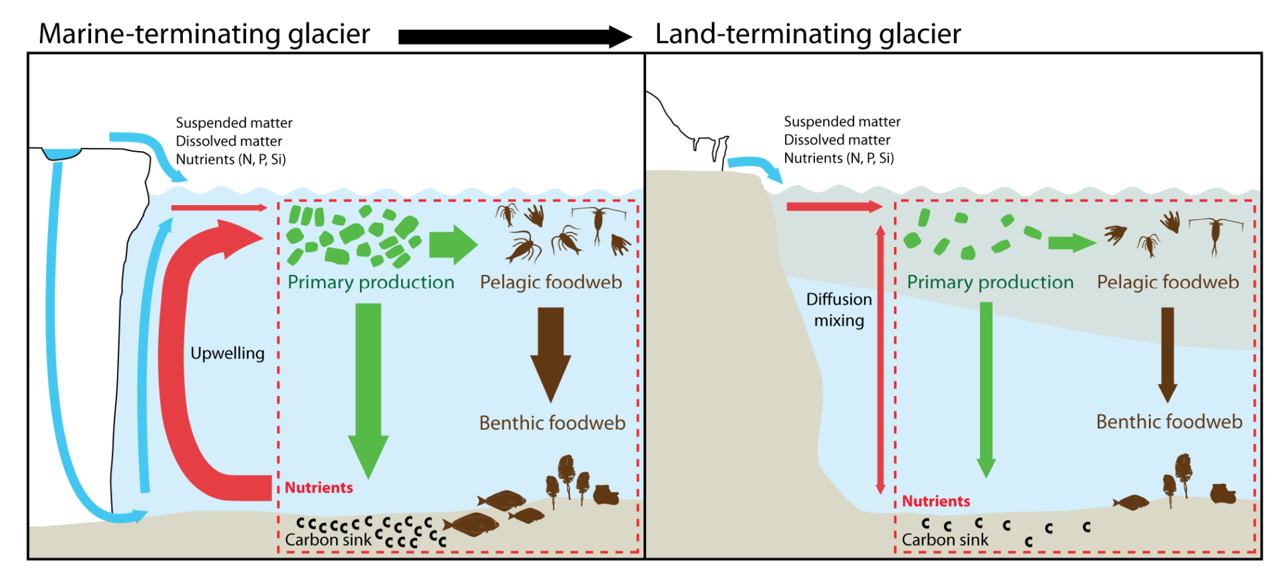A shift from marine-terminating to land-terminating glaciers in Arctic fjords (as expected due to ongoing climate change) leads to lower primary productivity, lower mineralisation rates and higher carbon burial, and support a less rich and diverse food web ?
Fjords typically display a seasonally dynamic, stratified circulation with an outward-flowing surface layer of brackish or fresh water and an inward-flowing deeper layer of marine waters that compensates for the loss of water entrained offshore. The hydrodynamic transport patterns and residence time of this glacial meltwater in the fjord depend on, among other factors, whether the meltwater is supplied by LTG or MTG (Figure 1).
LTGs discharge meltwater via rivers into the fjord’s surface waters, which strengthens stratification. This prevents mixing and upwelling of nutrients to the photic zone. Moreover, despite being a source of micronutrients, meltwater itself is unimportant as a source of nitrate, the main nutrient limiting coastal productivity. In addition, the rivers also entrain high suspended particle concentrations originating from glacial weathering, which attenuates incoming solar radiation. The high turbidity and nutrient limitation result in low phytoplankton biomass and primary production.
Fjords impacted by MTGs on the other hand, are not only affected by surface runoff, but also by subglacial discharge: Surface meltwater percolates to the glacier bed via fractures and channels, and this enters the fjord below sea-level. Being lighter than the surrounding seawater, it rises to the surface as a buoyant plume supplying nutrients to the surface layer near the glaciers in summer. Several observations from Godthåbsfjord (SW Greenland) and Sermilik (E Greenland) show that this process fuels a high primary production dominated by diatoms during summer which sustains high abundances of zooplankton, an important food source for crustaceans and pelagic fish (polar cod, arctic cod and capelin).
The impacts of the type of glacier (MTG vs. LTG) on individual components of pelagic and benthic compartments (e.g. the “living” carbon reservoirs) of Greenlandic fjords thus can have consequences for the entire food web, which will directly affect the carbon sequestration potential of these fjords and the provisioning of ecosystem services (e.g. food provisioning, nutrient recycling, climate regulation).

Material transport, biogeochemical processes and food web by the present marine terminating glaciers (left) and land terminating glaciers (right).